10 Amazing Festivals in Bhutan
Find the list of 10 widely celebrating festivals in Bhutan.
Find the list of 10 widely celebrating festivals in Bhutan.
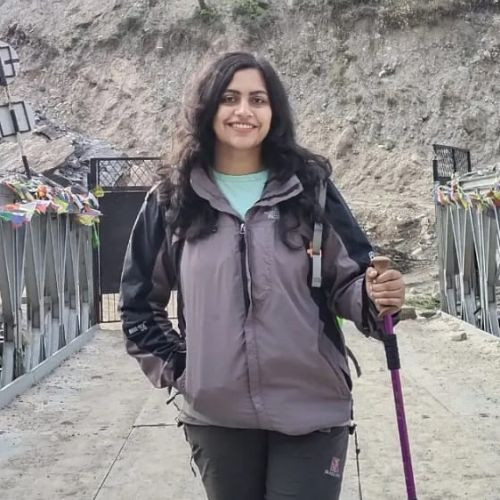
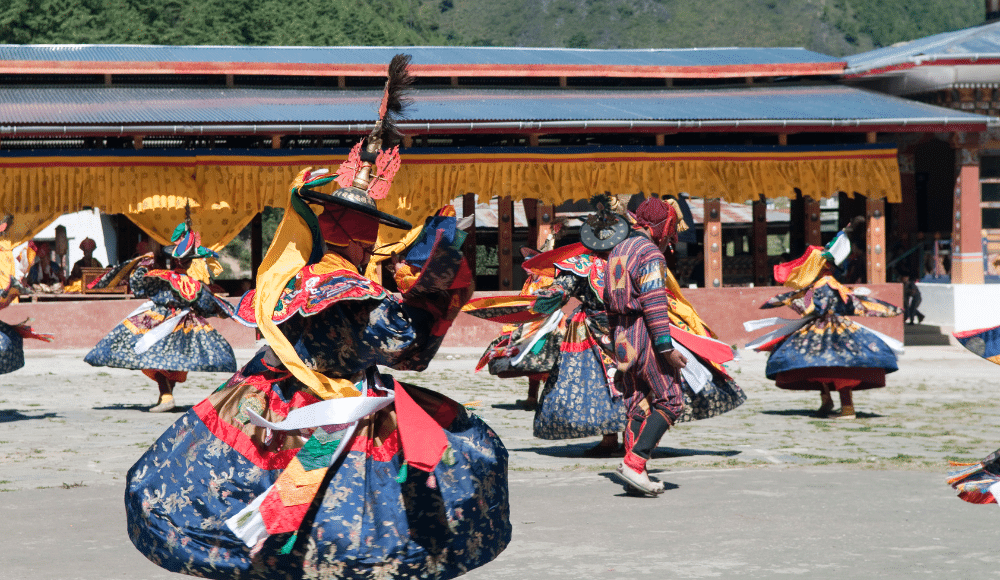
In Bhutan, festivals are significant occasions where the entire community gathers to take part in religious acts, get blessings, and socialize. Vibrance and ardor are born from extravagant costumed dance performances, captivating fire shows, legends-recited stories, and expressive masks.
A Tshechu is a religious celebration held on the tenth day of a lunar calendar month, which coincides with Guru Rinpoche's birthday. Every Bhutanese is said to think that in order to receive the blessings of their heavenly gods, they must at least once attend a Tshechus and watch a mask dance. Especially for those isolated in the Himalayas, it is a sizable social event that fosters a sense of community among the populations.
Monks play a crucial role in tshechus and devote weeks to preparation for the event, increasing their levels of prayer and meditation and honing their cham dance moves, which many Bhutanese believe offer the audience a blessing and a route to enlightenment.
Festivals offer a vibrant and upbeat ambiance akin to a carnival, in addition to their religious significance. Even though visitors don't fully comprehend the event, the show becomes more intense when large crowds from nearby villages approach.
The largest celebrations are held in the spring in the capital, Thimphu, and the autumn in the western city of Paro. They are undoubtedly highly-liked because of the proximity to Bhutan's international airport as well as the season. For those who have a few extra days to spare, the east and central festivals in Bhutan are very popular and great to attend.
Bhutan, a land of happiness and wealth, is a land of pure beauty and fascinating history. Bhutan's monasteries, Himalayan mountain range, deep valleys and meadows, or its well-known fairs and festivals—every part of the country is fascinating. In recent years, the boisterous religious festivities have drawn large crowds. This is due to the fact that ever since their country's founding, the Bhutanese people have done all within their power to preserve their culture and customs. Known as Tshechus, the celebrations in Bhutan are truly breathtaking and must be seen to be believed.
The greatest way to grasp the significance and symbolism of an occasion that might last up to four days is to participate in a Buddhist festival in Bhutan.
A tiny nation in South Asia is called the Kingdom of Bhutan. Bhutan is known as Druk Yul in Bhutanese, which translates to "the Land of the Thunder Dragon" and, as its name implies, is a Himalayan Kingdom rich in myths and tales. Indian states border the nation on three of its four sides: Sikkim on the west, Arunachal Pradesh on the east, Assam and West Bengal on the south. The Tibetan Autonomous Region of China is located to the north of Bhutan.
Further exploration of this magnificent mountain nation is provided in Introduction to Bhutan. Bhutan is a country that gradually wants the traveler to interact and become a part of the life that is Bhutan; it is not only about visiting the highlighted points or places. Bhutanese culture is fiercely protected and well-preserved. One can reach Bhutan from Nepal by flight for a tourism visit.
Get in touch with our experts right away and finalize an experience!
About Us| S.N |
Name of the festivals |
Month of celebration |
|
1. |
Thimphu Tshechu Festival |
September |
|
2. |
Paro Tshechu Festival |
March or beginning of April |
|
3. |
Haa Summer Festival |
July |
|
4. |
Black Necked Crane Festival |
November |
|
5. |
Jambay Lhakhang Festival |
October or November |
|
6. |
Punakha Drubchen Festival |
February |
|
7. |
Takin Festival |
February |
|
8. |
Nomad Festival |
February |
|
9 |
Jomolhari Mountain Festival |
October |
|
10. |
Wangdue Phodrang Tshechu |
September |
Each of Bhutan's 20 districts holds its own annual festival to mark the introduction of Buddhism, inviting residents of nearby villages to come together for a series of elaborate cham dances accompanied by the contemplative beat of drums and the smash of cymbals which are the musical instruments, made of embossed brass.
The best and most widely celebrated festivals in Bhutan are listed below; if you're planning a Bhutan trip to the happiest nation in the world, you must experience them all.
Bhutan's greatest and most well-known celebration is called Thimphu Tshechu. This event, which attracts tens of thousands of attendees decked out in beautiful, vibrant clothing to partake in the celebrations, is also referred to as the national festival of Bhutan. This Bhutan event features plays, activities, performances, dances, and other colorful displays. The colorful mask dances, in which citizens and monks enthusiastically dance to commemorate Bhutan's way of life and spirit, however, are what really steal the show.
The biggest and most well-known festival in Bhutan is the Thimphu Tshechu Festival, commonly known as the National Festival of Bhutan. Days and nights of prayer to invoke the celestial gods precede the actual Tshechu. The mask dances are performed as part of the celebration at Tendrel Thang which is a festival ground in order to bless the audience and impart the Buddhist dharma to them. Attending these celebrations is thought to bring good fortune.
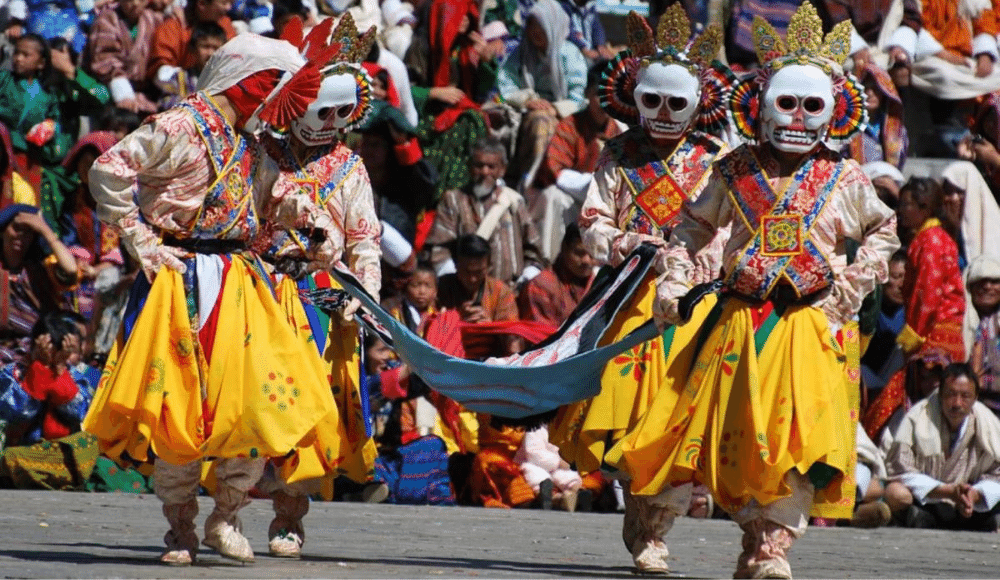
The Thimphu Festival, one of Bhutan's biggest celebrations, begins on the tenth day of the eighth Tibetan lunar month and lasts for three days, bringing the nation's capital to a virtual standstill. Thousands of Bhutanese will travel from cities and rural areas to attend, and there will be treasured traditional performances. Along with the festival's theatrical performances, atsaras, who dance and act silly to frighten away evil spirits, are another popular attraction for spectators. In order to promote regional health and safety activities, comedic or dramatic skits are also performed.
It is the perfect time for Bhutanese people to get together, dress to impress, and enjoy the blessings of the holy dances. The Thimphu Tshechu festival consists of a number of holy rituals that are meant to spread joy while ultimately helping the participants develop enlightened minds.
It is a colorful event that incorporates the dynamic essence of Bhutanese culture. It presents ethnic folk dances dressed in bright, traditionally crafted masks. The unfolding of Guru Rinpoche's Thongdrol marks the conclusion.
The Paro Tshechu, one of Bhutan's most well-known events, is now taking place. Both laypeople and monks dress in vivid, multicolored brocade gowns. They socialize, dance, have fun, and rejoice. The events from mythical stories and historical narratives are reenacted and replayed by monks wearing masks that depict the deities.
But the highlight of the festival is when attendees get their long-awaited first look at a 350-year-old Thangka, one of the oldest Buddhist holy scrolls. It contains historical accounts that honor Guru Rinpoche's valiant acts. Bhutan's warmth and connection are recognized to make Paro festivals the most popular ones in the entire nation. It takes place in March or April and is Bhutan's most well-known spring event.
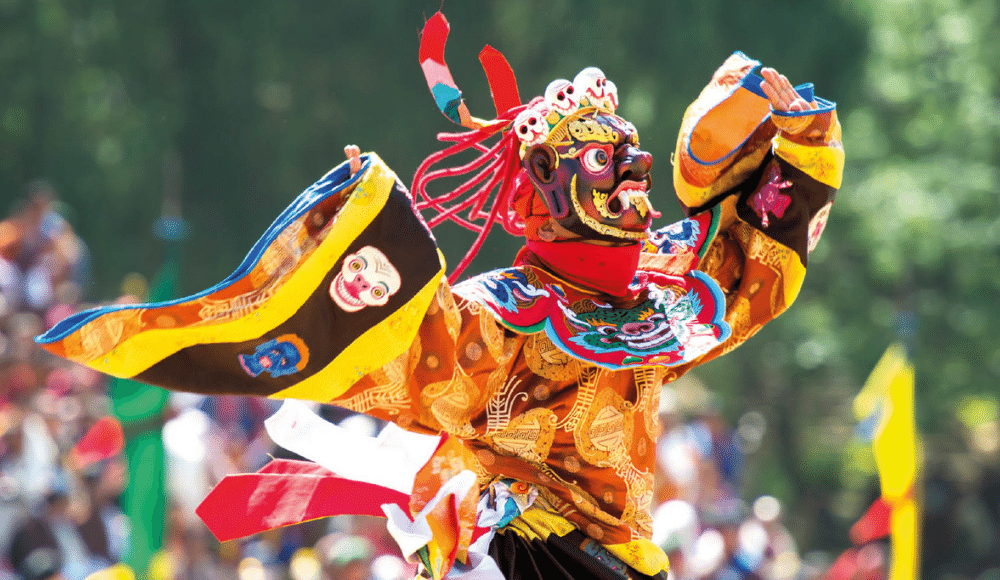
This four-day festival, which is becoming more and more well-liked, takes place every March and is known for its amazing costumes and masks as well as the ceremonial unveiling of a massive silk scroll called a Thongdroel, which is believed to plant the seed of enlightenment in the hearts of all who see it.
On the festival's final day, the Thongdroel, one of Bhutan's most significant spiritual blessings, is only revealed for a brief period of time after daybreak. The Paro Festival occurs at a time of year when the surrounding countryside is covered in flowering rhododendrons, making for the ideal spring promenade to increase enlightenment. This is in addition to the festival dances and events.
Haa Summer Festival is one of Bhutan's more recent events. Locals and visitors gather together to celebrate Bhutan's culture, tradition, religion, and sports. The Haa Valley nomads are the primary focus of the celebration. During this festival, some of the most important events and customs of these nomads are shown in the form of vivid photographs and exciting paintings. The best part is that visitors can take part in some of the entertaining activities like yak riding, folk dancing, and food tasting.
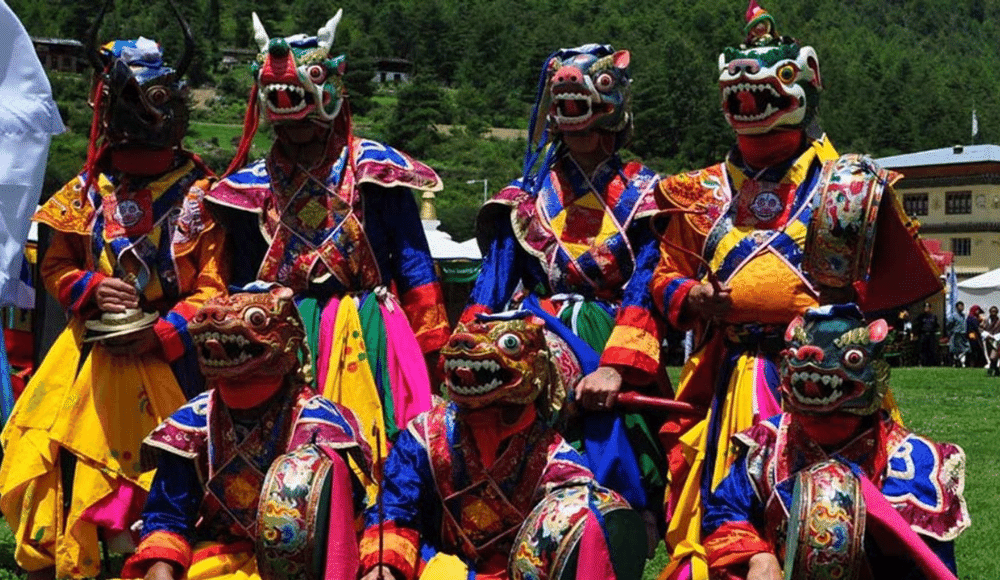
The Haa Summer Festival lasts for two to three days. Since 2012, this Bhutanese holiday has often been observed in July.
Travelers have the opportunity to learn more about the nomadic herders who live and work in the fir forests and over the primrose and poppy-covered hillsides outside of Paro thanks to the alpine environment of Haa Valley. Haa Festival is a summer event that includes traditional games, home-cooked cuisine, and a variety of songs and dances. Home-brewed ara rice wine is frequently served as an aperitif. The two-hour drive from Paro to the Haa Festival across the Chele La Pass, Bhutan's highest highway crossing, is frequently an event in and of itself.
The presence of these gorgeous and endangered birds is a cause for celebration for the villagers during this event. It is set up to raise awareness and comprehension of the value of protecting the endangered cranes. Bhutan's Black Necked Crane Festival features cultural performances such as traditional music and dances. the locals' mask dances, the crane dance, and schoolchildren's songs and dramas with environmental conservation themes.
Of the 15 species of cranes in the world, the black-necked crane is the most recent to be identified. This magnificent bird is indigenous to the Tibetan Plateau and migrates to lower elevations in the fall, which includes some regions of Bhutan. The appearance of the cranes heralds the conclusion of the harvesting season in Phobjikha Valley, one of Bhutan's primary ecosystems. The Black-Necked Crane Festival was first established with the intention of establishing a link between the betterment of local life and the preservation of the beautiful birds.
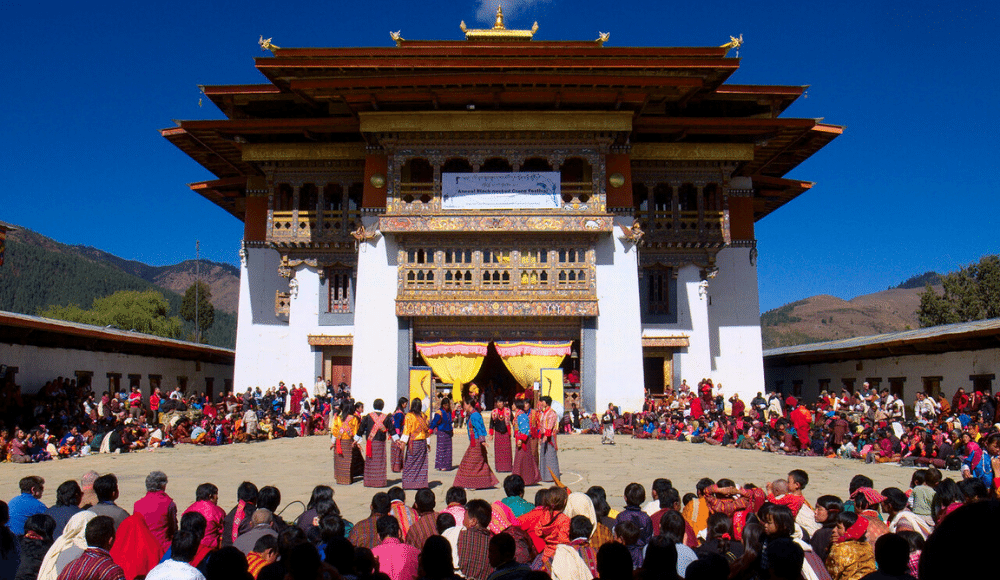
The festival became a yearly occasion to welcome the cranes and commemorate the long-standing bond between the cranes and the people of Phobjikha as it grew in popularity among local residents, tourists from neighboring Dzongkhang (districts), and foreign visitors over the years. One of the activities is the well-known Black-necked Crane dance, which is performed by school children dressed as cranes.
Since its inception in 1998, the Black-necked Crane Festival has attracted a growing number of tourists to this valley, providing a significant source of income for the people of Bhutan. In addition to experiencing one of Bhutan's most famous festivals, tourists get the option to honor this precious bird and aid a group of people who are trying to safeguard it.
In Bumthang, the Jambay Lhakhang Temple hosts the Jambay Lhakhang Drup festival. One of the 108 temples constructed in a single day by Tibetan King Songsten Gampo in the seventh century. Several mask dances, or "chams" as they are known locally, are performed during the festival. Thousands of tourists come to see the Mewang fire ceremony. The people can be seen dancing during the event beneath a dry glass structure that is ablaze. The event's major attraction is the Dance of Treasure, or Tercham, in which masked dancers perform while completely naked to bless infertile women so they can conceive.
Due to the two distinctive components of the program—the fire offering and naked dance—the Jambay Lhakhang Drub Festival has grown in popularity as a tourist destination. On the evening of the full moon day of the ninth Bhutanese lunar month, both the Mewang (fire offering) and the Naked Dance are performed. The Gregorian calendar typically places it between late October and early November.
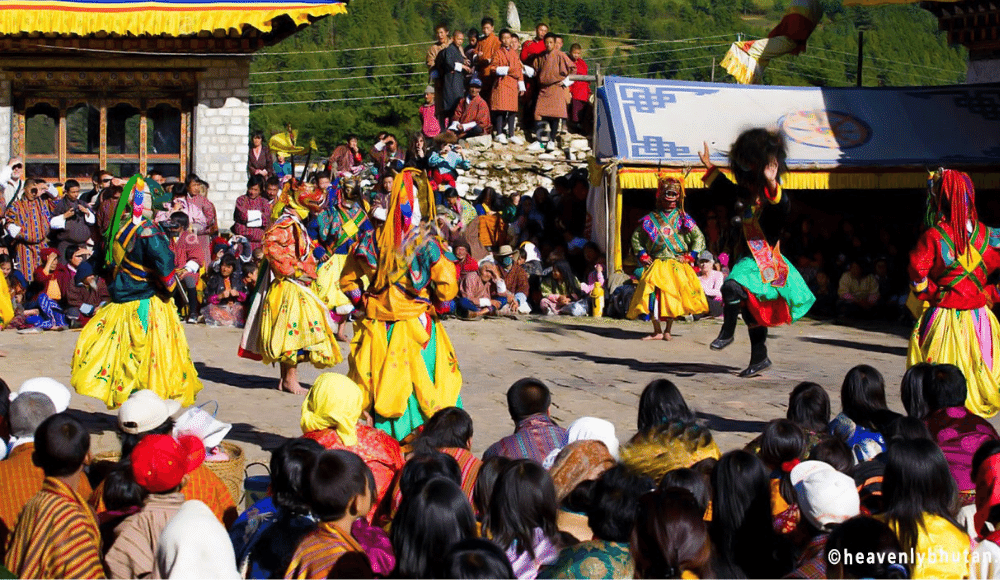
The people think that all of their obstacles will be gone if they successfully pass through the Fire offering, which is in the shape of an arch. Additionally, extra cleansing or the removal of impediments will take place when they watch the Naked Dance.
The Jambay Lhakhang Drub is one of Bhutan's most distinctive festivities. Literally translated as "Consecration of Jambay Temple," Jambay Lhakhang Drub. This temple, unlike other holy places, hosts an annual consecration festival (Drub). Since the temple's erection in the seventh century, this has been happening. This is uncommon because consecration often occurs just once. Jampel Lhakhang is, nonetheless, blessed annually with celebration.
Punakha Drubchen Festival, which has historical significance, honors the Bhutanese people's triumph over the invading Tibetan troops. Attending the event allows visitors to experience both learning about Bhutan's rich culture and living in the 17th century. The festival's main draw for visitors is the well-known and vibrant Mask or Cham dance, as well as other folk dances.
One of the most well-known festivals in Bhutan, Punakha Drubchen, is observed over the course of three days. As it follows the lunar calendar, the celebration takes place in February.
The Punakha Drubchen festival was established to honor the valiant Bhutanese triumph over the invading Tibetan army. It gained popularity over time and eventually turned into the Punakha district's yearly celebration.
Public visitors can also view a brief history of the Punakha Dzong building. This celebration not only showcases Bhutan's culture and traditions, but also its historic past. Since the Punakha Dzong is located at the meeting point of two rivers, the setting greatly enhances the stunning celebrations.
The Jigme Dorji National Park, which is in Gasa Dzongkhang, is where the Takin festivals are held. This celebration is regarded as one of the most well-known in Bhutan and offers a unique opportunity to see the country's national animal. In addition, there are other activities like hiking and hot spring spas that add to the uniqueness of this festival.
Your once-in-a-lifetime chance to see the Takin (Budorcas taxicolor), the country of Bhutan's national animal, up close and personal is the Takin Festival. Even though this gorgeous animal is a rare and endangered species elsewhere in the world, Bhutan nevertheless has robust populations of it. You won't want to pass up this opportunity to observe their distinctive body and inherent agility.
The festival is held in Jigme Dorji National Park's Gasa Dzongkhang, the second-largest national park in the nation. The park includes regions with a bounty of medicinal plants and temperate biodiversity. This charming region provides breathtaking views of breathtaking natural beauty and is home to a priceless legacy that has fostered environmental conservation for years.
As you relax around a traditional stone hearth used by the nomads for generations, sample some of the delectable regional cuisine.
This festival aims to raise awareness of the Takin's plight as an endangered species despite Bhutan's protection of them through designated parks. Being able to go up close to these animals during this festival is a highly uncommon and thrilling chance.
In Bumthang district, the holy center of Bhutan and home to some of the most stunning and historic monasteries and temples in the Eastern Himalayas, the annual three-day Nomad Festival is held. The annual meeting of Bhutan's nomadic highlanders unites the nomads of the north-eastern and north-western regions of the country in a memorable celebration of their distinctive, enigmatic, and unchanging culture despite modernity's ongoing intrusion into all areas of Bhutan.
The Nomad Festival offers viewers a close-up look at the proud nomadic people, whose way of life and customs have largely remained untouched to this day and represent a significant portion of Bhutan's ethnic and cultural variety.
During the festival, visitors can not only purchase some of the most delicately crafted Bhutanese handicrafts, but also watch experienced craftspeople bring bronze sculptures to life, forge gorgeous and deadly swords using time-honed techniques, create delicate vessels, and much more.
The event offers spectators the chance to take part in and watch local athletic competitions, including Keyshey (Traditional Bhutanese Wrestling), Khuru (Darts), Archery and Soksum (Light Javelin Throwing).
Jomolhari Mountain Festival, which lasts for two days, is one of the most beautiful sights you will ever witness. The event was held close to Mt. Jomolhari is at its heart a celebration of the spectacular surroundings and the incredible people. For the inhabitants that live in the area, this celebration is significant. The celebration, which is also known as the "snow leopard show," raises awareness of the snow leopards' dwindling populations.
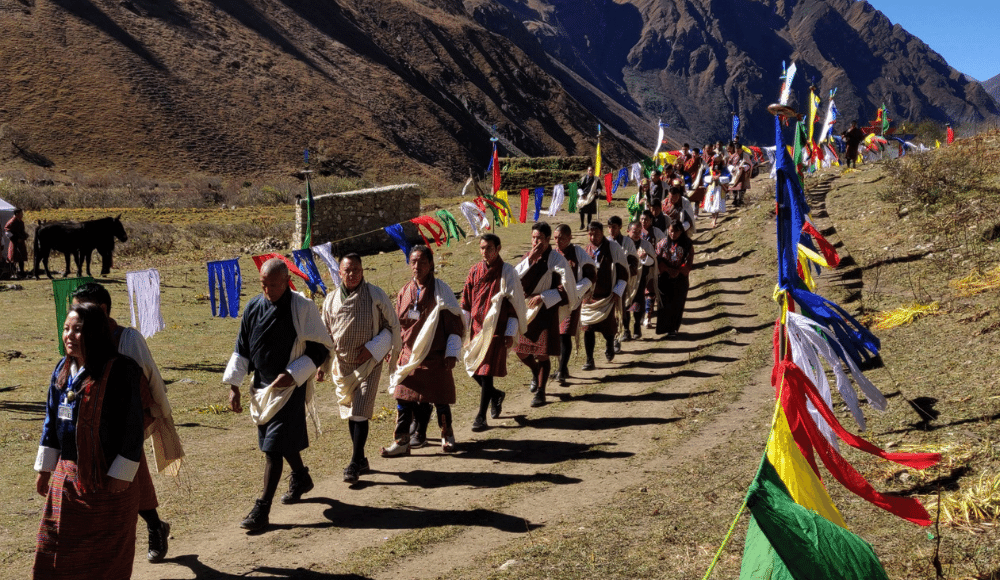
You can admire the people at the festival dressed in vibrant traditional garb. Folk dances are popular and go well with folk melodies. As a tourist, you will undoubtedly appreciate the performance and never forget the full festival experience.
The two-day Jomolhari Mountain Festival, which has a divine theme, showcases the exquisiteness of Bhutanese culture and the natural beauties that surround it. The snow leopard, in particular, is an abstract yet beautiful example of this. There are several camera trap photos along the route because the population of this threatened animal is on the rise there.
After Wangdue Dzong was finished in the 17th century, Zhabdrung Ngawang Namgyal instituted the annual Wangdue Phodrang Tshechu, also known as the Wangdue Festival. The three-day Tshechu is a very important celebration for the residents of Wangdue Phodrang and the rest of the nation. The Raksha Mangcham, or dance of the ox, is Tshechu's most famous performance.
The largest cultural celebration in the area draws thousands of individuals dressed in their finest traditional attire. Due to the Wangdue Phodrang festival, the district's public and government offices are closed.
During the festival, a wide range of mask dances are performed. The central Bhutanese region of Wangdue Phodrang is well-known for its decorative speeches and songs referred to as Lozeys. After Dzong, a stronghold, was finished in 1639, the yearly festival was instituted. One such celebration in Bhutan attracts tens of thousands of visitors as well as residents who come together to enjoy the festivities and to have a good time.
Bhutan is a stunning place to visit, an amazing site to view, and a calm and majestic location that will be a sight for sore eyes. This amazing location will captivate you with eye-catching great qualities of various destinations and get you involved with various recollections.
Between India and Tibet, an autonomous region, is Bhutan, a tiny yet stunning nation. Bhutan's culture and traditions are unique, and it has many beautiful places to explore. Bhutan's proximity to the majestic Himalayan Range makes it a fantastic destination year-round. The four distinct seasons in this nation are summer, winter, spring, and fall. It is blessed with gorgeous settings, bubbling rivers, a diversity of vegetation, wildlife, and snow-capped mountains.
Bhutan's spectacular culture, environment, and traditions are a result of its Himalayan location. Bhutan's location on the southern slope of the eastern Himalayas is the cause of its steep topography and the high Himalayas, which are cut through by a network of swift rivers. Bhutan is a great place to visit at any time of year. However, the monsoon season may occasionally occur in some parts of Bhutan.
Each of these seasons has its own allure and beauty when it comes to the subject of when is the best time to travel to or visit Bhutan. Although there are many interesting activities and places to visit in the summer and winter as well, travelers to Bhutan prefer the spring and fall seasons the most.
A Tshechu is a religious ceremony that takes place on Guru Rinpoche's birthday, which falls on the tenth day of a lunar calendar month. Everyone in Bhutan is claimed to believe that they must one attend a Tshechus and see a mask dance in order to be blessed by their celestial gods.
Yes, Bhutan is a culturally rich country and different beautiful festivals are celebrated here throughout the year which denote different cultural and religious harmony and significance.
Despite Bhutan's protection of the Takin through designated parks, this celebration strives to raise awareness of their predicament as an endangered species. This festival offers a rare and exciting opportunity to get up close to these animals.
Visiting Bhutan in the autumn season will be a remarkable experience as you will be able to witness different beautiful festivals in that season. Some of the major festivals celebrated in the autumn season in Bhutan are Thimphu Tshechu, Black Necked Crane festival and Jambay Lhakhang.
We can observe festivals like Paro Tshechu and Punakha Drubchen in the spring season in Bhutan.
The Haa Summer Festival helps you to explore the different authentic culture, religion, traditions and sports of Bhutan and we also get to interact with the Haa valley nomads which will be a remarkable experience during your visit to Bhutan in this festive season.
Jomolhari Mountain festival is celebrated at the base of Mount Jomolhari by the local communities.
It depends upon what type of festivals you want to observe. There are different festivals celebrated in different months throughout the year. Mostly, you can travel to Bhutan in the autumn and the spring seasons to observe the major and wonderful festivals of Bhutan.
Every festival in Bhutan carries its own historical significance. One of the festivals is Punakha Drubchen which honors the Bhutanese people's triumph over the invading Tibetan troops.